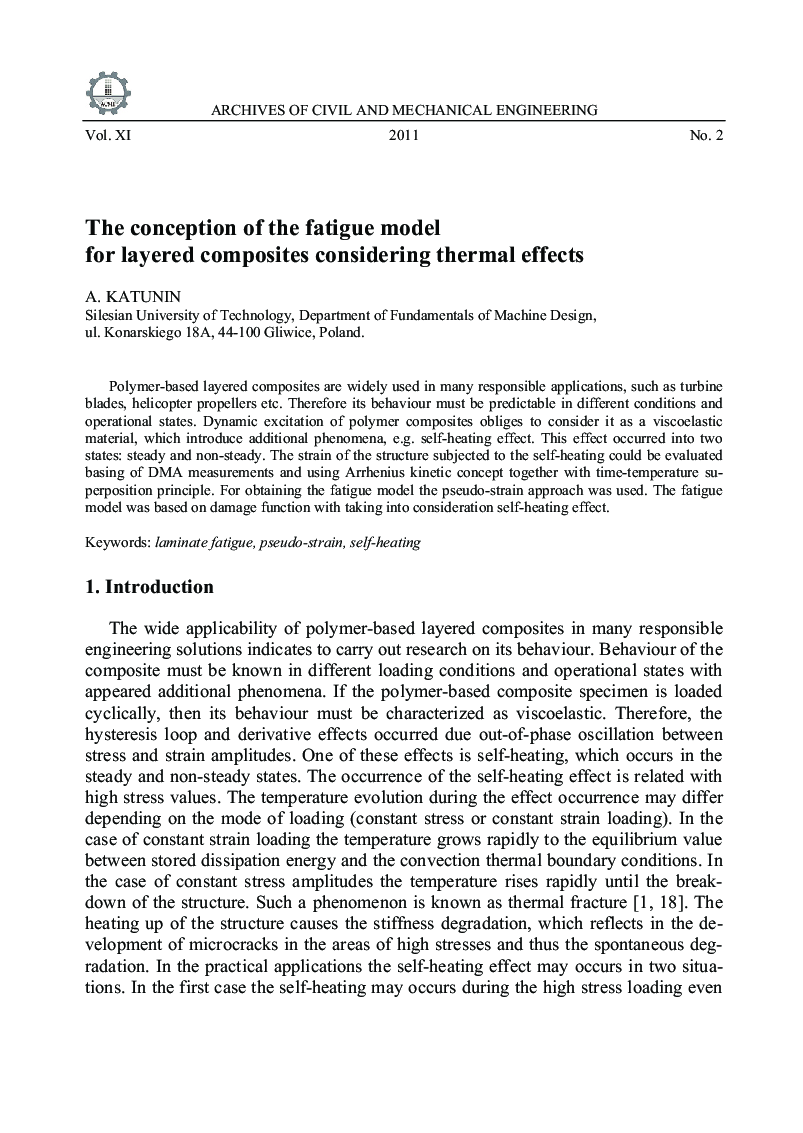| Article ID | Journal | Published Year | Pages | File Type |
|---|---|---|---|---|
| 246159 | Archives of Civil and Mechanical Engineering | 2011 | 11 Pages |
Polymer-based layered composites are widely used in many responsible applications, such as turbine blades, helicopter propellers etc. Therefore its behaviour must be predictable in different conditions and operational states. Dynamic excitation of polymer composites obliges to consider it as a viscoelastic material, which introduce additional phenomena, e.g. self-heating effect. This effect occurred into two states: steady and non-steady. The strain of the structure subjected to the self-heating could be evaluated basing of DMA measurements and using Arrhenius kinetic concept together with time-temperature superposition principle. For obtaining the fatigue model the pseudo-strain approach was used. The fatigue model was based on damage function with taking into consideration self-heating effect.
